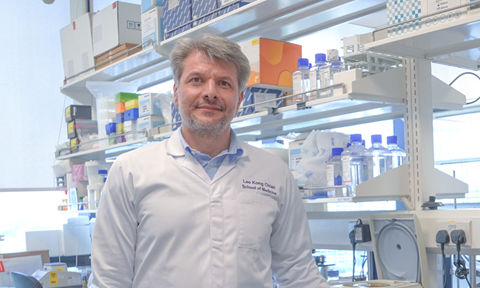
Researchers at the University of Oxford and Nanyang Technological University, Singapore (NTU Singapore) have uncovered the mechanism by which cells identify and repair a highly toxic form of DNA damage that causes cancer, neurodegeneration, and premature ageing.
The findings, reveal how DNA-protein crosslinks (DPCs) – harmful DNA lesions induced by chemotherapy, formaldehyde, and UV exposure – are recognised and broken down by SPRTN, a key repair enzyme.
The research team discovered a new region within SPRTN that enables it to selectively target DPC lesions, increasing its repair activity 67-fold while leaving surrounding structures unharmed.
Led by Kristijan Ramadan, Toh Kian Chui Distinguished Professor in Cancer and Stem Cell Biology at the Lee Kong Chian School of Medicine, NTU Singapore and Honorary Senior Researcher at the Department of Oncology, University of Oxford, the work has important implications for improving cancer therapy and healthy ageing.
The threat of DPC lesions
Every time a cell divides into two, it must accurately create a copy of all its DNA, a process that involves the tight coordination of sophisticated molecular machinery. DNA-protein crosslinks (DPCs) are bulky lesions in which unwanted proteins attach to DNA, blocking the process of copying the cell’s DNA. If left unrepaired, DPCs can cause neurodegeneration, premature ageing, and cancer. Therefore, understanding how these lesions are repaired is crucial for protecting genome integrity and preventing these conditions. DPCs can occur through normal cellular metabolism, as well as exposure to chemotherapeutic drugs, UV radiation, and environmental agents like formaldehyde. Formaldehyde is a Group 1 carcinogen commonly found in household furniture, paint, and air pollution, including haze.
SPRTN is a critical enzyme that protects cells against DPC lesions. It travels along the DNA and degrades the proteins in the lesions, which clears the blockage and enables the DNA copying process to proceed. Until now, it was unknown how SPRTN specifically breaks down DPC lesions without damaging functional proteins in the cell.
Discovery of a damage recognition domain
The research team discovered a specialised region within SPRTN which drives its activity against DPCs. The region detects chains of ubiquitin – tiny tags that attach to other proteins to modify their function – which DPC lesions have in abundance.
Recognition of these tags directly guides SPRTN to the DPC lesions, triggering a rapid increase in its activity to break down the harmful protein attachments.
“In the absence of ubiquitin chains on DPCs, SPRTN is slow and inefficient, taking hours to clear the DNA lesions. But when the ubiquitin chains are present, SPRTN’s ability to specifically target DPCs and break them down is enhanced 67-fold, enabling rapid removal of DPCs, which is critical due to its role in the rapid repair of DNA,” said Prof Ramadan, who is also the Director of the Cancer Discovery and Regenerative Medicine Programme at NTU Singapore’s Lee Kong Chian School of Medicine.
Importantly, the team showed that longer chains significantly accelerated the repair process compared to when only one or two ubiquitin tags were attached to the DNA lesion. This allows SPRTN to act quickly on DPCs while sparing other proteins that lack these tags.




